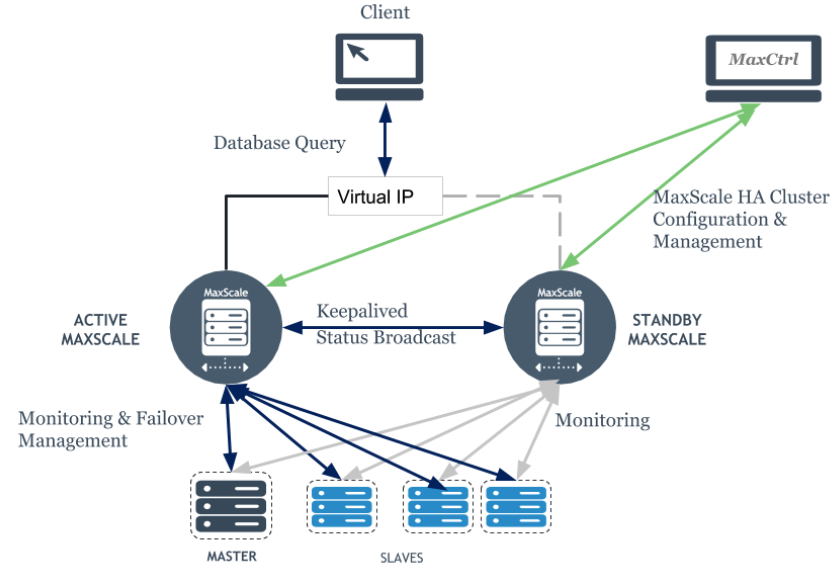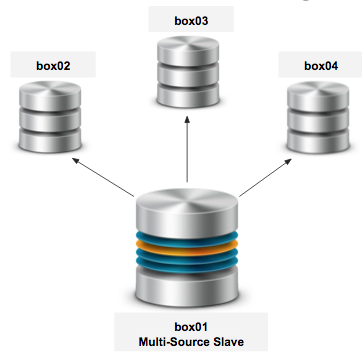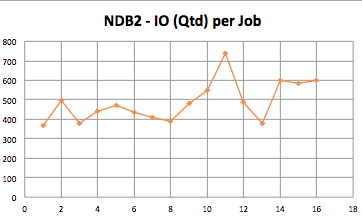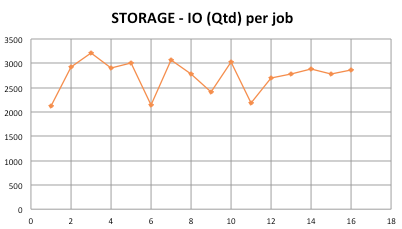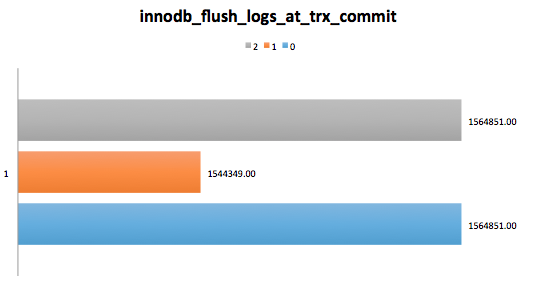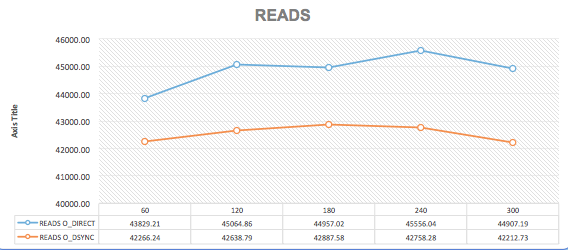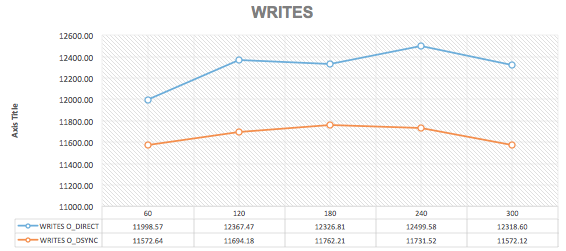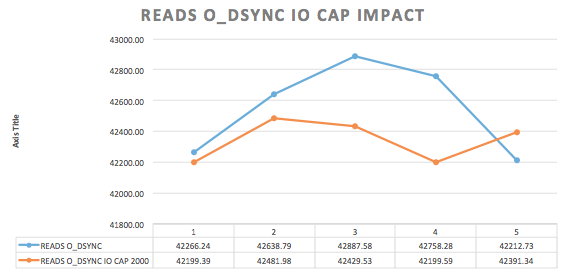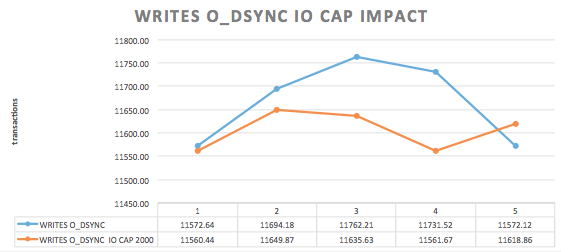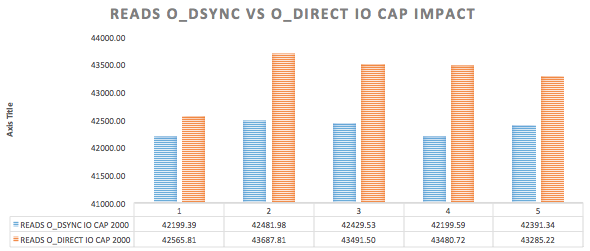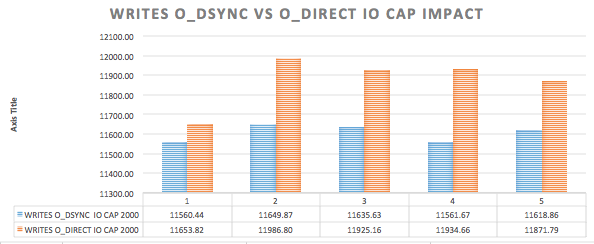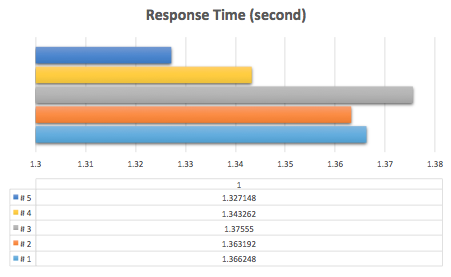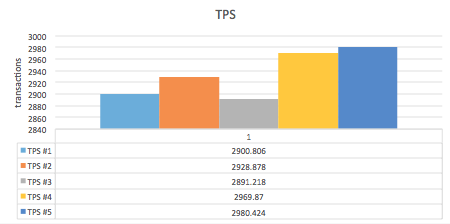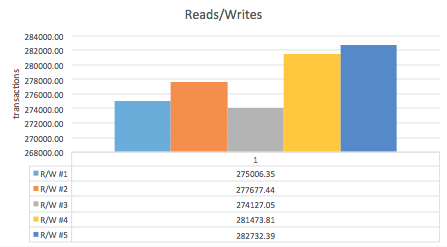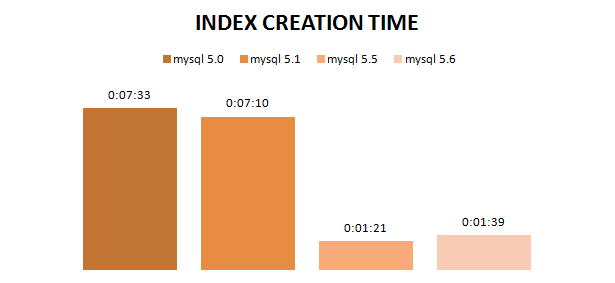MariaDB Maxscale has become more and more popular since some time ago, and it is mostly adopted by users that would like to take advantage of a good strategy for scaling out databases and the data infrastructure. With this, of course, come together with the concerns in how to make the environment safe, adopting the best industry’s practices. Most of the MariaDB Maxscale adopters have or will have Maxscale handling traffic to database instances/backends in a wan, where servers can be added to the MariaDB’s Intelligent Database Proxy and based on the configurations, traffic is routed to those servers. We know very well that the man-in-the-middle and some other strategies to intercept information can be used while data is being replicated, while connections are routed to the backend databases.
This blog post will explore the setup of an environment using self-signed OpenSSL certificates to make it safe enough to replicate data between the multiple backend database servers and mainly, we’re going to show you how you can setup the communication between the MariaDB Maxscale and the backend.
The following are the servers and version we’re using on this blog:
- 4 VMs vagrant-wise created:
-
- 1 MariaDB Maxscale;
- 1 MariaDB Server as Master;
- 2 MariaDB Server as Replica;
- CentOS 7.3 as the operating system;
- MariaDB Server 10.2.10;
- MariaDB Maxscale 2.1.10;
For this blog, I assume you already have the servers configured and replicating (one master and two replicas).
MariaDB Maxscale will look like this below at the end of this blog:
[root@maxscale ~]# maxadmin list servers
Servers.
-------------------+-----------------+-------+-------------+--------------------
Server | Address | Port | Connections | Status
-------------------+-----------------+-------+-------------+--------------------
prod_mariadb01 | 192.168.50.11 | 3306 | 0 | Master, Running
prod_mariadb02 | 192.168.50.12 | 3306 | 0 | Slave, Running
prod_mariadb03 | 192.168.50.13 | 3306 | 0 | Slave, Running
-------------------+-----------------+-------+-------------+--------------------
If you’re following this tutorial, make sure you setup on servers the MariaDB Official repository to have access to the software we will need to set up as we go through.
#: setup MariaDB Official repository
[root@box01 ~]# curl -sS https://downloads.mariadb.com/MariaDB/mariadb_repo_setup | sudo bash
[info] Repository file successfully written to /etc/yum.repos.d/mariadb.repo.
[info] Adding trusted package signing keys...
[info] Succeessfully added trusted package signing keys.
Generating the Self-Signed Certificates
The place to start with this is to generate your self-signed OpenSSL certificates, but, if you would like to acquire a certificate for any of the existing entities that will sign the certificate for you, that’s fine as well. Here, I’m going through the creation of certificates with OpenSSL, present on most of the Linux Distributions by the default and then, I’m going to use that. Below you can find the command to generate your certificates, the same as I used to generate the certificates at /etc/my.cnf.d/certs/. One detail here is that you won’t see this directory on the MariaDB Maxscale host, so, you will need to create that directory and move certs there.
[root@maxscale ~]# mkdir -pv /etc/my.cnf.d/certs/
mkdir: created directory ‘/etc/my.cnf.d/certs/’
[root@box01 ~]# mkdir -pv /etc/my.cnf.d/certs/
mkdir: created directory ‘/etc/my.cnf.d/certs/’
[root@box02 ~]# mkdir -pv /etc/my.cnf.d/certs/
mkdir: created directory ‘/etc/my.cnf.d/certs/’
[root@box03 ~]# mkdir -pv /etc/my.cnf.d/certs/
mkdir: created directory ‘/etc/my.cnf.d/certs/’
I created the directory on the MariaDB Maxscale server host, moved my prompt to /etc/my.cnf.d/certs/ and then, created the certificates using the below commands.
#: generate the ca-key
$ openssl genrsa 2048 > ca-key.pem
#: server certs
$ openssl req -new -x509 -nodes -days 9999 -key ca-key.pem > ca-cert.pem
$ openssl req -newkey rsa:2048 -days 1000 -nodes -keyout server-key.pem > server-req.pem
$ openssl x509 -req -in server-req.pem -days 3600 -CA ca-cert.pem -CAkey ca-key.pem -set_serial 01 -out server-cert.pem
#: client certs
$ openssl req -newkey rsa:2048 -days 3600 -nodes -keyout client-key.pem -out client-req.pem
$ openssl rsa -in client-key.pem -out client-key.pem
$ openssl x509 -req -in client-req.pem -days 3600 -CA ca-cert.pem -CAkey ca-key.pem -set_serial 01 -out client-cert.pem
#: verify generated certificates
$ openssl verify -CAfile ca-cert.pem server-cert.pem client-cert.pem
server-cert.pem: OK
client-cert.pem: OK
One thing you should be aware of if the last part doesn’t go well and the certificates verifications don’t give you an OK is that you need to have different names for the CN or Common Names. The error that appeared sometimes is like the one below:
#: execution the SSL certificates verification
$ openssl verify -CAfile ca-cert.pem server-cert.pem client-cert.pem
server-cert.pem: C = BR, ST = MG, L = BH, O = WBC, OU = WB, CN = WB, emailAddress = me@all.com
error 18 at 0 depth lookup:self signed certificate
OK
client-cert.pem: C = BR, ST = MG, L = BH, O = WBC, OU = WB, CN = WB, emailAddress = me@all.com
error 18 at 0 depth lookup:self signed certificate
OK
After finishing the certificate’s creation successfully and then, pass through the verification, as shown above, you will have the following files at /etc/my.cnf.d/certs/:
#: listing servers on MariaDB Maxscale server host
[root@maxscale ~]# ls -lh /etc/my.cnf.d/certs/
total 32K
-rw-r--r-- 1 root root 1.4K Nov 5 11:08 ca-cert.pem
-rw-r--r-- 1 root root 1.7K Nov 5 11:07 ca-key.pem
-rw-r--r-- 1 root root 1.3K Nov 5 11:11 client-cert.pem
-rw-r--r-- 1 root root 1.7K Nov 5 11:11 client-key.pem
-rw-r--r-- 1 root root 1.1K Nov 5 11:10 client-req.pem
-rw-r--r-- 1 root root 1.3K Nov 5 11:09 server-cert.pem
-rw-r--r-- 1 root root 1.7K Nov 5 11:09 server-key.pem
-rw-r--r-- 1 root root 1.1K Nov 5 11:09 server-req.pem
Now you do have the client’s and server’s certificates you need to go ahead with this setup.
Setting Up GTID Replication SSL Based
If you got new servers, maybe it’s just easy enough to say that, to configure replication SSL based, you need to have a user for each of the slaves/replicas you plan to have under your master server or as well, you can have a specialized user create for connecting to your master from an IP using a wildcard, such as 192.168.100.%. I will encourage you to have one user per slave/replica as it can enforce the security of your environment and avoid other issues like someone else on the same network trying to gain access on the master database. It’s OK that the replication user just has REPLICATION SLAVE and REPLICATION CLIENT privileges, but, you never know what is gonna be attempted. By the way, following what should be done, you have the following:
- Move client certificates to all 3 servers, adding certificates at /etc/my.cnf.d/certs/ (you need to create this directory on all four servers);
- Add a file under the /etc/my.cnf.d names ssl.cnf as MariaDB will read that when it starts up mysqld;
- Create the users, one for each of the slaves, on master with the directive REQUIRE SSL;
- Configure replication on slaves/replicas with that user and using the required MASTER_SSL directives on the CHANGE MASTER TO command.
To move files around, I like to have a key based authentication configured to makes things easier as you don’t need to digit passwords anymore after getting keys in place on all the servers. You can generate you a key on each of the servers, copy them all them all to the ~/.ssh/authorized_keys file on the central servers, which in my case is the MariaDB Maxscale server host and them, send the files to all the servers. One additional thing you need to pay attention, in this case, is that the authorized_keys file should have permission set as 0600 to make it work. So, this is a way to go, or, you can use your user’s password as well, it’s gonna work. You can as well for sure streamline the process like below (it’s a very bad behavior generate a key without a passphrase, so, consider a passphrase to your keys to make it safer):
#: generate a simple key, you can have a strong one
#: if you go create it on production
[root@maxscale ~]# ssh-keygen
Generating public/private rsa key pair.
Enter file in which to save the key (/root/.ssh/id_rsa):
Enter passphrase (empty for no passphrase):
Enter same passphrase again:
Your identification has been saved in /root/.ssh/id_rsa.
Your public key has been saved in /root/.ssh/id_rsa.pub.
[...snip...]
Let’s get key published on database servers:
#: adding the public key on the other hosts
[root@maxscale ~]# for i in {11..13}; do ssh-copy-id -i ~/.ssh/id_rsa.pub 192.168.50.$i; done
/bin/ssh-copy-id: INFO: attempting to log in with the new key(s), to filter out any that are already installed
/bin/ssh-copy-id: INFO: 1 key(s) remain to be installed -- if you are prompted now it is to install the new keys
root@192.168.50.11's password:
Number of key(s) added: 1
Now try logging into the machine, with: "ssh '192.168.50.11'"
and check to make sure that only the key(s) you wanted were added.
/bin/ssh-copy-id: INFO: attempting to log in with the new key(s), to filter out any that are already installed
/bin/ssh-copy-id: INFO: 1 key(s) remain to be installed -- if you are prompted now it is to install the new keys
root@192.168.50.12's password:
Number of key(s) added: 1
Now try logging into the machine, with: "ssh '192.168.50.12'"
and check to make sure that only the key(s) you wanted were added.
/bin/ssh-copy-id: INFO: attempting to log in with the new key(s), to filter out any that are already installed
/bin/ssh-copy-id: INFO: 1 key(s) remain to be installed -- if you are prompted now it is to install the new keys
root@192.168.50.13's password:
Number of key(s) added: 1
Now try logging into the machine, with: "ssh '192.168.50.13'"
and check to make sure that only the key(s) you wanted were added.
#: testing if key based SSH is all set
[root@maxscale ~]# for i in {11..13}; do ssh 192.168.50.$i hostname; done
box01
box02
box03
Once SSH keys are in place, we can just move the certificates from your central host to the others; I use rsync for the below task and as a hint, you will need to have it on all servers:
#: moving certificates for database hosts
[root@maxscale ~]# for i in {11..13}; do rsync -avrP -e ssh /etc/my.cnf.d/certs/* 192.168.50.$i:/etc/my.cnf.d/certs/; done
sending incremental file list
ca-cert.pem
1261 100% 0.00kB/s 0:00:00 (xfer#1, to-check=7/8)
ca-key.pem
1675 100% 1.60MB/s 0:00:00 (xfer#2, to-check=6/8)
client-cert.pem
1135 100% 1.08MB/s 0:00:00 (xfer#3, to-check=5/8)
client-key.pem
1675 100% 1.60MB/s 0:00:00 (xfer#4, to-check=4/8)
client-req.pem
976 100% 953.12kB/s 0:00:00 (xfer#5, to-check=3/8)
server-cert.pem
1135 100% 1.08MB/s 0:00:00 (xfer#6, to-check=2/8)
server-key.pem
1704 100% 1.63MB/s 0:00:00 (xfer#7, to-check=1/8)
server-req.pem
976 100% 953.12kB/s 0:00:00 (xfer#8, to-check=0/8)
sent 11046 bytes received 164 bytes 22420.00 bytes/sec
total size is 10537 speedup is 0.94
[...snip...]
Once certificates are located on all servers, next step is to add the ssl.cnf at /etc/my.cnf.d, as below:
#: add the below as a content of the file /etc/my.cnf.d/ssl.cnf
[root@box01 ~]# cat /etc/my.cnf.d/ssl.cnf
[client]
ssl
ssl-ca=/etc/my.cnf.d/certs/ca-cert.pem
ssl-cert=/etc/my.cnf.d/certs/client-cert.pem
ssl-key=/etc/my.cnf.d/certs/client-key.pem
[mysqld]
ssl
ssl-ca=/etc/my.cnf.d/certs/ca-cert.pem
ssl-cert=/etc/my.cnf.d/certs/server-cert.pem
ssl-key=/etc/my.cnf.d/certs/server-key.pem
You should restart your MariaDB Server after adding the certificates configuration, as if you don’t, it’s not going to be possible to connect to the database server with the users we created. In case something goes wrong with certificates, and you need to generate new ones, repeating the process aforementioned, you’ll need to restart database servers as client certificates are loaded to the memory, and you can get an error like below if you have a certificates mismatch:
[root@box01 certs]# mysql
ERROR 2026 (HY000): SSL connection error: error:14090086:SSL routines:SSL3_GET_SERVER_CERTIFICATE:certificate verify failed
Let’s now create a specific replication user for each of the servers we have on our replication topology currently:
box01 [(none)]> CREATE USER repl_ssl@'192.168.50.11' IDENTIFIED BY '123456';
Query OK, 0 rows affected (0.00 sec)
box01 [(none)]> GRANT REPLICATION SLAVE, REPLICATION CLIENT ON *.* TO repl_ssl@'192.168.50.11' REQUIRE SSL;
Query OK, 0 rows affected (0.00 sec)
box01 [(none)]> CREATE USER repl_ssl@'192.168.50.12' IDENTIFIED BY '123456';
Query OK, 0 rows affected (0.00 sec)
box01 [(none)]> GRANT REPLICATION SLAVE, REPLICATION CLIENT ON *.* TO repl_ssl@'192.168.50.12' REQUIRE SSL;
Query OK, 0 rows affected (0.00 sec)
box01 [(none)]> CREATE USER repl_ssl@'192.168.50.13' IDENTIFIED BY '123456';
Query OK, 0 rows affected (0.00 sec)
box01 [(none)]> GRANT REPLICATION SLAVE, REPLICATION CLIENT ON *.* TO repl_ssl@'192.168.50.13' REQUIRE SSL;
Query OK, 0 rows affected (0.00 sec)
Above, we created one user per server, and I did that thinking at the moment that we eventually need to switch over the current master to one of the slaves, so, that way, the replication user don’t need to be of concern when dealing with an emergency or even when a planned failover is required. The next step should be thought in your case, and I’m going to simplify the case here and assume we’re working with a new environment, not in production yet. For changing your production environment to use SSL certificates, you need to spend more time on this, planning it well to avoid services disruptions. So, I’m going to grab the replication coordinates on the master, out of SHOW MASTER STATUS and then, issue the command CHANGE MASTER TO on slaves to get replication going. Here, I assumed you moved all the certs to all database servers, and they are living at /etc/my.cnf.d/certs/.
#: getting the current master status
box01 [(none)]> show master status\G
*************************** 1. row ***************************
File: box01-bin.000024
Position: 877
Binlog_Do_DB:
Binlog_Ignore_DB:
1 row in set (0.00 sec)
#: the CHANGE MASTER TO command should be something like the below
box02 [(none)]> CHANGE MASTER TO MASTER_HOST='192.168.50.11',
-> MASTER_USER='repl_ssl',
-> MASTER_PASSWORD='123456',
-> MASTER_LOG_FILE='box01-bin.000024',
-> MASTER_LOG_POS=877,
-> MASTER_SSL=1,
-> MASTER_SSL_CA='/etc/my.cnf.d/certs/ca-cert.pem',
-> MASTER_SSL_CERT='/etc/my.cnf.d/certs/client-cert.pem',
-> MASTER_SSL_KEY='/etc/my.cnf.d/certs/client-key.pem';
Query OK, 0 rows affected (0.05 sec)
box02 [(none)]> start slave;
Query OK, 0 rows affected (0.00 sec)
box02 [(none)]> show slave status\G
*************************** 1. row ***************************
Slave_IO_State: Waiting for master to send event
Master_Host: 192.168.50.11
Master_User: repl_ssl
Master_Port: 3306
Connect_Retry: 3
Master_Log_File: box01-bin.000028
Read_Master_Log_Pos: 794
Relay_Log_File: box02-relay-bin.000006
Relay_Log_Pos: 1082
Relay_Master_Log_File: box01-bin.000028
Slave_IO_Running: Yes
Slave_SQL_Running: Yes
[...snip...]
Master_SSL_Allowed: Yes
Master_SSL_CA_File: /etc/my.cnf.d/certs/ca-cert.pem
Master_SSL_CA_Path:
Master_SSL_Cert: /etc/my.cnf.d/certs/client-cert.pem
Master_SSL_Cipher:
Master_SSL_Key: /etc/my.cnf.d/certs/client-key.pem
Seconds_Behind_Master: 0
Last_IO_Errno: 0
Last_IO_Error:
Last_SQL_Errno: 0
Last_SQL_Error:
Replicate_Ignore_Server_Ids:
Master_Server_Id: 1
Master_SSL_Crl: /etc/my.cnf.d/certs/ca-cert.pem
Master_SSL_Crlpath:
Using_Gtid: No
Gtid_IO_Pos:
Replicate_Do_Domain_Ids:
Replicate_Ignore_Domain_Ids:
Parallel_Mode: conservative
1 row in set (0.00 sec)
You can use GTIDs as well, and then, you CHANGE MASTER TO command will be something like:
box03 [(none)]> CHANGE MASTER TO MASTER_HOST='192.168.50.11',
-> MASTER_USER='repl_ssl',
-> MASTER_PASSWORD='123456',
-> MASTER_USE_GTID=SLAVE_POS,
-> MASTER_SSL=1,
-> MASTER_SSL_CA='/etc/my.cnf.d/certs/ca-cert.pem',
-> MASTER_SSL_CERT='/etc/my.cnf.d/certs/client-cert.pem',
-> MASTER_SSL_KEY='/etc/my.cnf.d/certs/client-key.pem';
Query OK, 0 rows affected (0.05 sec)
box03 [(none)]> start slave;
Query OK, 0 rows affected (0.04 sec)
box03 [(none)]> show slave status\G
*************************** 1. row ***************************
Slave_IO_State: Waiting for master to send event
Master_Host: 192.168.50.11
Master_User: repl_ssl
Master_Port: 3306
Connect_Retry: 3
Master_Log_File: box01-bin.000028
Read_Master_Log_Pos: 794
Relay_Log_File: box03-relay-bin.000002
Relay_Log_Pos: 654
Relay_Master_Log_File: box01-bin.000028
Slave_IO_Running: Yes
Slave_SQL_Running: Yes
[...snip...]
Master_SSL_Allowed: Yes
Master_SSL_CA_File: /etc/my.cnf.d/certs/ca-cert.pem
Master_SSL_CA_Path:
Master_SSL_Cert: /etc/my.cnf.d/certs/client-cert.pem
Master_SSL_Cipher:
Master_SSL_Key: /etc/my.cnf.d/certs/client-key.pem
Seconds_Behind_Master: 0
Last_IO_Errno: 0
Last_IO_Error:
Last_SQL_Errno: 0
Last_SQL_Error:
Replicate_Ignore_Server_Ids:
Master_Server_Id: 1
Master_SSL_Crl: /etc/my.cnf.d/certs/ca-cert.pem
Master_SSL_Crlpath:
Using_Gtid: Slave_Pos
Gtid_IO_Pos: 0-1-911075
Replicate_Do_Domain_Ids:
Replicate_Ignore_Domain_Ids:
Parallel_Mode: conservative
1 row in set (0.00 sec)
One of the things you can check at the end to make sure replication is all set is of course if error log gives you a clear view of everything that was set up until now and if you added the variable report_host, you could see the result of SHOW SLAVE HOSTS on the master like below:
box01 [(none)]> show slave hosts\G
*************************** 1. row ***************************
Server_id: 3
Host: box03.wb.com
Port: 3306
Master_id: 1
*************************** 2. row ***************************
Server_id: 2
Host: box02.wb.com
Port: 3306
Master_id: 1
2 rows in set (0.00 sec)
Unfortunately, the @@report_host is not a dynamic system variable, and you need to add it to the MariaDB Server configuration file and restart mysqld to make it assume the new value. It’s passed to the master when the slave/replica’s IO_THREAD establish the connection with the master (handshake process). Setting Up MariaDB Maxscale and the ReadWriteSplit SSL Based Until here, we went through the details of each of the configurations from the certificates generation, replication configuration, and setup. Now, we need to go over the Maxscale installation; the commands required to dynamically create the monitor, a service, a listener and add servers to have at the end the configurations for the ReadWriteSplit router to handle reads and writes for the master and slaves.
The steps here will be:
- Setup MariaDB Maxscale;
- Put together a basic configuration for MariaDB Maxscale and start it;
- Create a user for the Maxscale’s Service and another one for the Monitor on backends with the REQUIRE SSL;
- Add SSL certificates to the server’s and listener definitions files;
- Run commands that will create a monitor, a listener, a service; we will then create the servers and add them to the monitor;
- Create a user for the application on backends.
To setup MariaDB Maxscale (when writing this blog, it was at its 2.1.10 version), run the below knowing that the MariaDB Official repository was set up at the very beginning of this exercise:
#: setting up MariaDB Maxscale
[root@maxscale ~]# yum install maxscale -y
Loaded plugins: fastestmirror
Loading mirror speeds from cached hostfile
* base: mirror.nbtelecom.com.br
* epel: mirror.cedia.org.ec
* extras: mirror.nbtelecom.com.br
* updates: mirror.nbtelecom.com.br
Resolving Dependencies
--> Running transaction check
---> Package maxscale.x86_64 0:2.1.10-1 will be updated
---> Package maxscale.x86_64 0:2.1.11-1 will be an update
--> Finished Dependency Resolution
[...snip...]
[root@maxscale maxscale.cnf.d]# maxscale --version
MaxScale 2.1.11
You will notice that the password for the maxuser_ssl and maxmon_ssl users is a kind of hash. It was generated using maxkeys to avoid clean text, as you can see below. You will be required to configure yours instead of using the below one.
#: create the secrets file, by default at /var/lib/maxscale
[root@maxscale ~]# maxkeys
Generating .secrets file in /var/lib/maxscale.
#: the password configured on database servers, but encrypted for maxscale configs
[root@maxscale ~]# maxpasswd /var/lib/maxscale/ 123456
AF76BE841B5B4692D820A49298C00272
#: change the file /var/lib/maxscale/.secrets ownership
[root@maxscale ~]# chown maxscale:maxscale /var/lib/maxscale/.secrets
Let’s now put together a basic configuration to start MariaDB Maxscale. Add the below configurations to the maxscale’s configuration file so you can start maxscale:
[root@maxscale ~]# cat /etc/maxscale.cnf
[maxscale]
threads=auto
log_info=true
[rwsplit-service]
type=service
router=readwritesplit
user=maxuser_ssl
passwd=AF76BE841B5B4692D820A49298C00272
[CLI]
type=service
router=cli
[CLI Listener]
type=listener
service=CLI
protocol=maxscaled
socket=default
Before starting MariaDB Maxscale, adding a listener to the pre-defined service, a monitor and creating and adding our servers on which we set up the replication previously, we need to create users, for the service, the monitor and for the application that will connect to the backend servers through Maxscale. Below users should be created on master and then, replicate for the replicas:
#: maxscale's mysqlmon user
sudo mysql -e "grant all on *.* to maxmon_ssl@'192.168.50.100' identified by '123456' require ssl" -vvv
#: maxscale's service user
sudo mysql -e "grant all on *.* to maxuser_ssl@'192.168.50.100' identified by '123456' require ssl" -vvv
#: application user
sudo mysql -e "grant select,insert,delete,update on *.* to appuser_ssl@'192.168.%' identified by '123456' require ssl;" -vvv
Now we can start MariaDB Maxscale using the basic configuration file we just created, I created mine at /root/maxscale_configs. So, I can start Maxscale doing like below and checking the log file at /var/log/maxscale/maxscale.log:
[root@maxscale maxscale.cnf.d]# [root@maxscale certs]# systemctl start maxscale
[root@maxscale certs]# systemctl status maxscale
● maxscale.service - MariaDB MaxScale Database Proxy
Loaded: loaded (/usr/lib/systemd/system/maxscale.service; disabled; vendor preset: disabled)
Active: active (running) since Fri 2017-12-15 13:21:57 GMT; 5s ago
Process: 13138 ExecStart=/usr/bin/maxscale (code=exited, status=0/SUCCESS)
Process: 13135 ExecStartPre=/usr/bin/install -d /var/run/maxscale -o maxscale -g maxscale (code=exited, status=0/SUCCESS)
Main PID: 13140 (maxscale)
CGroup: /system.slice/maxscale.service
└─13140 /usr/bin/maxscale
Dec 15 13:21:57 maxscale maxscale[13140]: Loaded module readwritesplit: V1.1.0 from /usr/lib64/maxscale/libreadwritesplit.so
Dec 15 13:21:57 maxscale maxscale[13140]: Loaded module maxscaled: V2.0.0 from /usr/lib64/maxscale/libmaxscaled.so
Dec 15 13:21:57 maxscale maxscale[13140]: Loaded module MaxAdminAuth: V2.1.0 from /usr/lib64/maxscale/libMaxAdminAuth.so
Dec 15 13:21:57 maxscale maxscale[13140]: No query classifier specified, using default 'qc_sqlite'.
Dec 15 13:21:57 maxscale maxscale[13140]: Loaded module qc_sqlite: V1.0.0 from /usr/lib64/maxscale/libqc_sqlite.so
Dec 15 13:21:57 maxscale maxscale[13140]: Service 'rwsplit-service' has no listeners defined.
Dec 15 13:21:57 maxscale maxscale[13140]: Listening for connections at [/tmp/maxadmin.sock]:0 with protocol MaxScale Admin
Dec 15 13:21:57 maxscale maxscale[13140]: MaxScale started with 1 server threads.
Dec 15 13:21:57 maxscale maxscale[13140]: Started MaxScale log flusher.
Dec 15 13:21:57 maxscale systemd[1]: Started MariaDB MaxScale Database Proxy.
At this point, the maxscale does not have anything to report in but the service we configured on the basic configuration file. That is mandatory to start Maxscale and make it happy on the first basic initialization. The log events above can show you that maxscale was started with a service but not a listener, not a monitor and no servers. So, this is what we’re going to create now, running the below commands while checking the Maxscale’s log file (below were extracted from this blog from Marküs Mäkelä and adjusted/fixed on this JIRA):
#: let's create a monitor based on the "mysqlmon"
[root@maxscale maxscale_configs]# maxadmin create monitor cluster-monitor mysqlmon
Created monitor 'cluster-monitor'
#: log file will tell the below
2017-10-10 15:34:31 notice : (3) [mysqlmon] Initialise the MySQL Monitor module.
#: let's alter the monitor to add some options
[root@maxscale maxscale_configs]# maxadmin alter monitor cluster-monitor user=maxuser_ssl password=AF76BE841B5B4692D820A49298C00272 monitor_interval=10000
#: log file will tell you about the last changes
2017-10-10 15:34:31 notice : (3) Loaded module mysqlmon: V1.5.0 from /usr/lib64/maxscale/libmysqlmon.so
2017-10-10 15:34:31 notice : (3) Created monitor 'cluster-monitor'
2017-10-10 15:35:03 notice : (4) Updated monitor 'cluster-monitor': type=monitor
2017-10-10 15:35:03 notice : (4) Updated monitor 'cluster-monitor': user=maxuser_ssl
2017-10-10 15:35:03 notice : (4) Updated monitor 'cluster-monitor': password=AF76BE841B5B4692D820A49298C00272
2017-10-10 15:35:03 notice : (4) Updated monitor 'cluster-monitor': monitor_interval=1000
#: let's restart the monitor to take changes in effect
[root@maxscale maxscale_configs]# maxadmin restart monitor cluster-monitor
2017-10-10 18:40:50 error : [mysqlmon] No Master can be determined
#: let's list existing monitors
[root@maxscale maxscale_configs]# maxadmin list monitors
---------------------+---------------------
Monitor | Status
---------------------+---------------------
cluster-monitor | Running
---------------------+---------------------
#: let’s create the listener, adding the client certificates for the connections
[root@maxscale maxscale.cnf.d]# maxadmin create listener rwsplit-service rwsplit-listener 0.0.0.0 4006 default default default /etc/my.cnf.d/certs/client-key.pem /etc/my.cnf.d/certs/client-cert.pem /etc/my.cnf.d/certs/ca-cert.pem
Listener 'rwsplit-listener' created
#: this is what log events tells us
2017-11-22 23:26:18 notice : (5) Using encrypted passwords. Encryption key: '/var/lib/maxscale/.secrets'.
2017-11-22 23:26:18 notice : (5) [MySQLAuth] [rwsplit-service] No users were loaded but 'inject_service_user' is enabled. Enabling service credentials for authentication until database users have been successfully loaded.
2017-11-22 23:26:18 notice : (5) Listening for connections at [0.0.0.0]:4006 with protocol MySQL
2017-11-22 23:26:18 notice : (5) Created TLS encrypted listener 'rwsplit-listener' at 0.0.0.0:4006 for service 'rwsplit-service'
#: listing the existing listeners
[root@maxscale maxscale.cnf.d]# maxadmin list listeners
Listeners.
-----------------+---------------------+--------------------+-----------------+-------+--------
Name | Service Name | Protocol Module | Address | Port | State
-----------------+---------------------+--------------------+-----------------+-------+--------
rwsplit-listener | rwsplit-service | MySQLClient | 0.0.0.0 | 4006 | Running
CLI Listener | CLI | maxscale | default | 0 | Running
-----------------+---------------------+--------------------+-----------------+-------+--------
Here is the point in which you need to create the servers and then, you need alter the server’s configurations to add the SSL certificates, let’s see:
#: creating the server prod_mariadb01 and alter its configurations to add SSL
[root@maxscale ~]# maxadmin create server prod_mariadb01 192.168.50.11 3306
Created server 'prod_mariadb01'
[root@maxscale ~]# maxadmin alter server prod_mariadb01 ssl=required ssl_key=/etc/my.cnf.d/certs/client-key.pem ssl_cert=/etc/my.cnf.d/certs/client-cert.pem ssl_ca_cert=/etc/my.cnf.d/certs/ca-cert.pem
#: creating the server prod_mariadb02 and alter its configurations to add SSL
[root@maxscale ~]# maxadmin create server prod_mariadb02 192.168.50.12 3306
Created server 'prod_mariadb02'
[root@maxscale ~]# maxadmin alter server prod_mariadb02 ssl=required ssl_key=/etc/my.cnf.d/certs/client-key.pem ssl_cert=/etc/my.cnf.d/certs/client-cert.pem ssl_ca_cert=/etc/my.cnf.d/certs/ca-cert.pem
#: creating the server prod_mariadb03 and alter its configurations to add SSL
[root@maxscale ~]# maxadmin create server prod_mariadb03 192.168.50.13 3306
Created server 'prod_mariadb03'
[root@maxscale ~]# maxadmin alter server prod_mariadb03 ssl=required ssl_key=/etc/my.cnf.d/certs/client-key.pem ssl_cert=/etc/my.cnf.d/certs/client-cert.pem ssl_ca_cert=/etc/my.cnf.d/certs/ca-cert.pem
#: maxscale logs should be like
2017-12-02 18:56:28 notice : (19) Loaded module MySQLBackend: V2.0.0 from /usr/lib64/maxscale/libMySQLBackend.so
2017-12-02 18:56:28 notice : (19) Loaded module MySQLBackendAuth: V1.0.0 from /usr/lib64/maxscale/libMySQLBackendAuth.so
2017-12-02 18:56:28 notice : (19) Created server 'prod_mariadb01' at 192.168.50.11:3306
2017-12-02 18:57:57 notice : (20) Enabled SSL for server 'prod_mariadb01'
2017-12-02 19:00:42 notice : (22) Created server 'prod_mariadb02' at 192.168.50.12:3306
2017-12-02 19:00:49 notice : (23) Enabled SSL for server 'prod_mariadb02'
2017-12-02 19:00:58 notice : (24) Created server 'prod_mariadb03' at 192.168.50.13:3306
2017-12-02 19:01:04 notice : (25) Enabled SSL for server 'prod_mariadb03'
It’s good to say that MySQLBackend and MySQLBackedAuth are default values for the server’s protocol and the authenticator module respectively and those values are assumed by default when it’s omitted when creating servers. At this point we can show servers to see the servers configured with the SSL certificates:
[root@maxscale ~]# maxadmin show servers | grep -i ssl
SSL initialized: yes
SSL method type: MAX
SSL certificate verification depth: 9
SSL certificate: /etc/my.cnf.d/certs/client-cert.pem
SSL key: /etc/my.cnf.d/certs/client-key.pem
SSL CA certificate: /etc/my.cnf.d/certs/ca-cert.pem
SSL initialized: yes
SSL method type: MAX
SSL certificate verification depth: 9
SSL certificate: /etc/my.cnf.d/certs/client-cert.pem
SSL key: /etc/my.cnf.d/certs/client-key.pem
SSL CA certificate: /etc/my.cnf.d/certs/ca-cert.pem
SSL initialized: yes
SSL method type: MAX
SSL certificate verification depth: 9
SSL certificate: /etc/my.cnf.d/certs/client-cert.pem
SSL key: /etc/my.cnf.d/certs/client-key.pem
SSL CA certificate: /etc/my.cnf.d/certs/ca-cert.pem
And then, we can list servers, and you will see that, it’s not yet recognized by Maxscale being neither master or slave:
[root@maxscale maxscale_configs]# maxadmin list servers
Servers.
-------------------+-----------------+-------+-------------+--------------------
Server | Address | Port | Connections | Status
-------------------+-----------------+-------+-------------+--------------------
prod_mysql03 | 192.168.50.13 | 3306 | 0 | Running
prod_mysql02 | 192.168.50.12 | 3306 | 0 | Running
prod_mysql01 | 192.168.50.11 | 3306 | 0 | Running
-------------------+-----------------+-------+-------------+--------------------
Next step is to add the created servers to the monitor and service; both created previously as well:
[root@maxscale maxscale_configs]# maxadmin add server prod_mariadb01 cluster-monitor rwsplit-service
Added server 'prod_mysql01' to 'cluster-monitor'
Added server 'prod_mysql01' to 'rwsplit-service’
[root@maxscale maxscale_configs]# maxadmin add server prod_mariadb02 cluster-monitor rwsplit-service
Added server 'prod_mysql02' to 'cluster-monitor'
Added server 'prod_mysql02' to 'rwsplit-service'
[root@maxscale maxscale_configs]# maxadmin add server prod_mariadb03 cluster-monitor rwsplit-service
Added server 'prod_mysql03' to 'cluster-monitor'
Added server 'prod_mysql03' to 'rwsplit-service’
#: logs
2017-10-10 18:45:45 notice : (16) Added server 'prod_mysql01' to monitor 'cluster-monitor'
2017-10-10 18:45:45 notice : (16) Added server 'prod_mysql01' to service 'rwsplit-service'
2017-10-10 18:45:45 notice : Server changed state: prod_mysql01[192.168.50.11:3306]: new_master. [Running] -> [Master, Running]
2017-10-10 18:45:45 notice : [mysqlmon] A Master Server is now available: 192.168.50.11:3306
2017-10-10 18:45:52 notice : (17) Added server 'prod_mysql02' to monitor 'cluster-monitor'
2017-10-10 18:45:52 notice : (17) Added server 'prod_mysql02' to service 'rwsplit-service'
2017-10-10 18:45:53 notice : Server changed state: prod_mysql01[192.168.50.11:3306]: lost_master. [Master, Running] -> [Running]
2017-10-10 18:45:53 error : [mysqlmon] No Master can be determined
2017-10-10 18:45:56 notice : (18) Added server 'prod_mysql03' to monitor 'cluster-monitor'
2017-10-10 18:45:56 notice : (18) Added server 'prod_mysql03' to service 'rwsplit-service'
2017-10-10 18:45:56 notice : Server changed state: prod_mysql01[192.168.50.11:3306]: new_master. [Running] -> [Master, Running]
2017-10-10 18:45:56 notice : Server changed state: prod_mysql03[192.168.50.13:3306]: new_slave. [Running] -> [Slave, Running]
2017-10-10 18:45:56 notice : [mysqlmon] A Master Server is now available: 192.168.50.11:3306
You can see that, when adding servers to the service, which is the ReadWriteSplit, the current servers’ states and their roles pops up.
[root@maxscale ~]# maxadmin list servers
Servers.
-------------------+-----------------+-------+-------------+--------------------
Server | Address | Port | Connections | Status
-------------------+-----------------+-------+-------------+--------------------
prod_mariadb01 | 192.168.50.11 | 3306 | 0 | Master, Running
prod_mariadb02 | 192.168.50.12 | 3306 | 0 | Slave, Running
prod_mariadb03 | 192.168.50.13 | 3306 | 0 | Slave, Running
-------------------+-----------------+-------+-------------+--------------------
Yet, all the configurations are modular and you can find all files created based on the dynamic configurations we have done until now at /var/lib/maxscale/maxscale.cnf.d:
[root@maxscale maxscale.cnf.d]# ls -lh
total 24K
-rw-r--r-- 1 root root 251 Dec 2 19:10 cluster-monitor.cnf
-rw-r--r-- 1 root root 299 Dec 2 18:57 prod_mariadb01.cnf
-rw-r--r-- 1 root root 299 Dec 2 19:00 prod_mariadb02.cnf
-rw-r--r-- 1 root root 299 Dec 2 19:01 prod_mariadb03.cnf
-rw-r--r-- 1 root root 313 Nov 22 23:26 rwsplit-listener.cnf
-rw-r--r-- 1 root root 71 Dec 2 19:10 rwsplit-service.cnf
SSL configurations will be on rwsplit-listener.cnf and on servers’ files:
[root@maxscale maxscale.cnf.d]# cat rwsplit-listener.cnf
[rwsplit-listener]
type=listener
protocol=MySQLClient
service=rwsplit-service
address=0.0.0.0
port=4006
authenticator=MySQLAuth
ssl=required
ssl_cert=/etc/my.cnf.d/certs/client-cert.pem
ssl_key=/etc/my.cnf.d/certs/client-key.pem
ssl_ca_cert=/etc/my.cnf.d/certs/ca-cert.pem
ssl_cert_verify_depth=9
ssl_version=MAX
[root@maxscale maxscale.cnf.d]# cat prod_mariadb0*
[prod_mariadb01]
type=server
protocol=MySQLBackend
address=192.168.50.11
port=3306
authenticator=MySQLBackendAuth
ssl=required
ssl_cert=/etc/my.cnf.d/certs/client-cert.pem
ssl_key=/etc/my.cnf.d/certs/client-key.pem
ssl_ca_cert=/etc/my.cnf.d/certs/ca-cert.pem
ssl_cert_verify_depth=9
ssl_version=MAX
[prod_mariadb02]
type=server
protocol=MySQLBackend
address=192.168.50.12
port=3306
authenticator=MySQLBackendAuth
ssl=required
ssl_cert=/etc/my.cnf.d/certs/client-cert.pem
ssl_key=/etc/my.cnf.d/certs/client-key.pem
ssl_ca_cert=/etc/my.cnf.d/certs/ca-cert.pem
ssl_cert_verify_depth=9
ssl_version=MAX
[prod_mariadb03]
type=server
protocol=MySQLBackend
address=192.168.50.13
port=3306
authenticator=MySQLBackendAuth
ssl=required
ssl_cert=/etc/my.cnf.d/certs/client-cert.pem
ssl_key=/etc/my.cnf.d/certs/client-key.pem
ssl_ca_cert=/etc/my.cnf.d/certs/ca-cert.pem
ssl_cert_verify_depth=9
ssl_version=MAX
At this point, as everything is set up, you can test the access to your databases through Maxscale, using the appuser_ssl (If you haven’t created that user yet, create it now on the master and check authentication). You will notice the below event added to the Maxscale’s log as of when you create new users as Maxscale will update its internal information about users on backends:
2017-12-03 00:15:17 notice : [MySQLAuth] [rwsplit-service] Loaded 15 MySQL users for listener rwsplit-listener.
If you have the user created, as we did create it before, place the below contents at the home directory of your user and test the access with the appuser_ssl user.
#: check if mysql client is present on Maxscale server
[root@maxscale ~]# which mysql
/bin/mysql
#: add the .my.cnf at your user's home directory
[root@maxscale ~]# cat .my.cnf
[client]
ssl
ssl-ca=/etc/my.cnf.d/certs/ca-cert.pem
ssl-cert=/etc/my.cnf.d/certs/client-cert.pem
ssl-key=/etc/my.cnf.d/certs/client-key.pem
[mysql]
ssl
ssl-ca=/etc/my.cnf.d/certs/ca-cert.pem
ssl-cert=/etc/my.cnf.d/certs/client-cert.pem
ssl-key=/etc/my.cnf.d/certs/client-key.pem
To execute the below test you will need to install MariaDB-client package on the MariaDB Maxscale server host.
[root@maxscale ~]# mysql -u appuser_ssl -p123456 -h 192.168.50.100 -P 4006 -e "select @@server_id\G"
*************************** 1. row ***************************
@@server_id: 2
[root@maxscale ~]# mysql -u appuser_ssl -p123456 -h 192.168.50.100 -P 4006 -e "select @@server_id\G"
*************************** 1. row ***************************
@@server_id: 3
Conclusion
It’s a very dense reading, full of practices, bells and, whittles, but, it’s going to serve as a reference for you when implementing MariaDB Maxscale thinking of having it safe, with traffic going over SSL. This is not only about Maxscale, but, about having MariaDB Servers with data being replicated using SSL certificates as well.
Remember that, as Maxscale Dynamic Commands made it possible to configure ReadWriteSplit with mysqlmon, it gives you the same as well to work with galeramon. The product is becoming more and more versatile and the main point to hilight, it’s making the task to position a load balancer or an intelligent database proxy between backends and the clients an easy thing.




